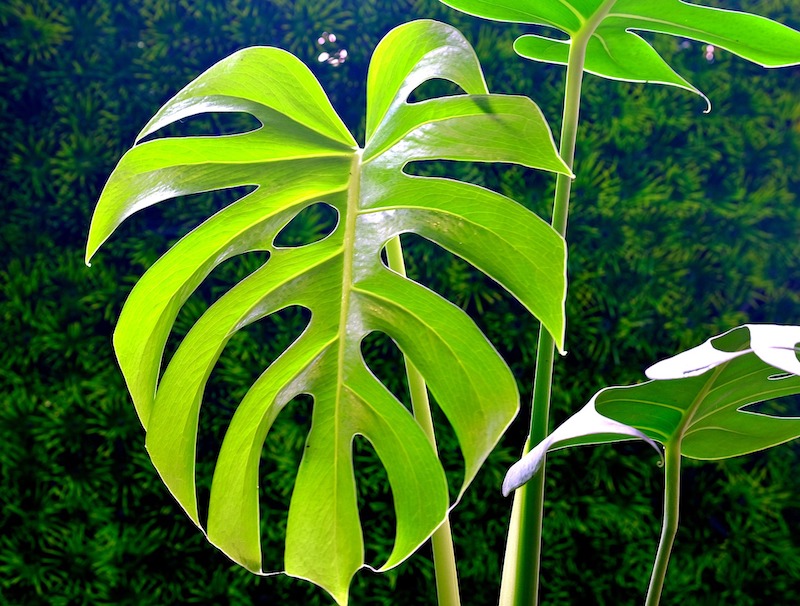Nothing says late spring like moving all of your houseplants outdoors! Houseplants can benefit from being moved outdoors seasonally when the weather warms up. It is easier to repot plants outdoors and gives them more room to grow. Exposure to the outdoor elements of sun, wind, and rain can help bolster the health of many plants including Monstera.

When To Put Monstera Outside
Monsteras are native to the tropical forests of Central America. They do not like temperatures below 40 degrees Fahrenheit / 4 degrees Celsius. Do not move your Monstera outside until overnight temperatures are consistently above the 50s Fahrenheit / 10 Celsius. Monsteras can withstand high heat and humidity as long as they are not in direct sunlight.
When To Bring Monstera Indoors
A good time to begin thinking about bringing your Monstera indoors is when the season begins to change in late fall. Keep an eye on the overnight temperatures to make sure there is no threat of frost or cold temperatures.
Once you have decided to bring your Monstera inside, it is important to prepare your plant to come back indoors. Do not bring your plant directly back indoors. It is important to thoroughly scout for pests prior to bringing indoors. Wipe down all leaves and stems, scouting for pests, and examine the soil for any and all pests. Once ready to bring indoors, bring the plant into a quarantined holding area to make sure you cleared all signs of pests.

Caring For Monstera Outdoors
Caring for your Monstera plant outdoors is slightly different from caring for it indoors. It is important to slowly transition your Monstera into its outdoor location. Harden off the plant by moving it initially into a more sheltered location, protecting it from sun, wind, and rain. Slowly move the plant into its final location in a spot that has indirect dappled sunlight.
Outdoor plants require more regular watering than indoor houseplants since the soil dries up more quickly. Be mindful that dark colored pots can heat up and dry out even more quickly. Regularly monitor the moisture level of the soil, and water thoroughly when dry. Outdoor container plants are also more vulnerable to extreme wind or rainstorms; make sure to protect plants from falling over and breaking, and from foliage damage.
 |
Author Katie Endicott - Published 4-8-2023 |
